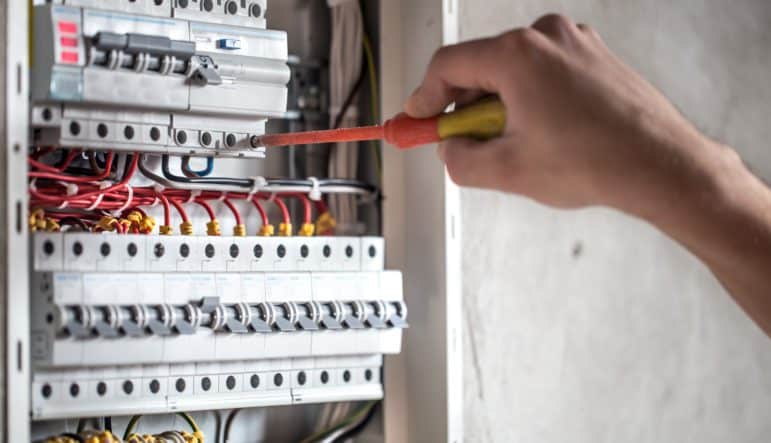Have you ever wondered what a switchboard is and why it’s used? Do you know when your commercial site needs switchboard upgrades, repairs or relocation? Among the most important electrician responsibilities and skills is knowing how to spot a switchboard that needs some TLC – and our team know what they’re doing.
We’ll run through the various functions of switchboards, the different types and more right here.
From general purpose switchboards to fusible and commercial metering, we’re covering all bases regarding what switchboards do and how you can create the best configuration – whatever your needs. If you find this switchboard information useful, maybe you should consider a career as an Australian electrician and for parents learn how to keep your kids safe around electricity.
A switchboard comprises several components that make up the main switchboard structure and can be a single vertical structure or a series of interconnected switchboard structures depending on the power and loads connected.
Most switchboards are mounted close to a wall and can only be accessed from the front, although they can be constructed to allow access from the front and the back if necessary.
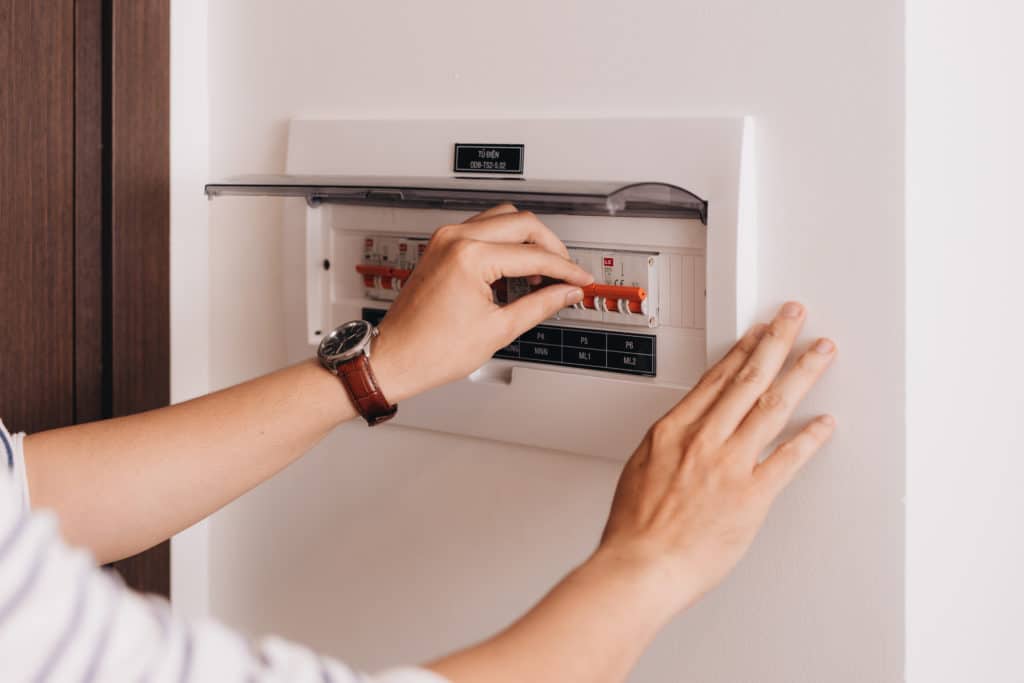
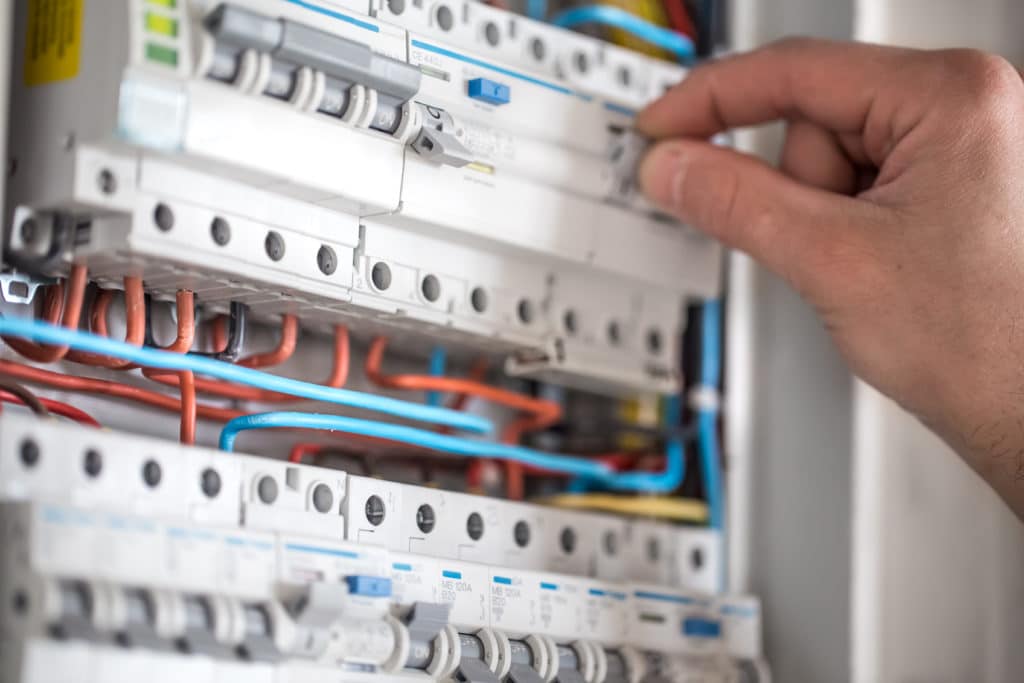
The main ingredient of any switchboard is the circuits that run through them. A simple circuit definition is a closed loop that electricity flows through. Circuits in a switchboard are what carry the power or electricity through to other areas in a building, home or business – meaning they are the vital pieces of your structure that allow your electricity to be distributed throughout your home or workplace.
Your circuits are key to safely distributing your electricity to the correct areas in whatever electrical system you use. This main power is channelled into smaller components, known as branch circuits, which power each area or device in your network.
Switchboards are electrical panels with switches that can interrupt or ‘switch’ a circuit’s flow, which means that the circuits can be controlled. Using simple on/off switches can direct, re-direct or shut off the flow of electricity to wherever it is needed or not needed, meaning you’re not wasting unnecessary electricity when it’s not required.
You can use devices like single or multiple generators that control the electricity that feeds into the switchboard. Other control components include frequency gauges, which can measure how well your switchboard works in synchronising your energy flow.
Busbars – or ‘the bus’ – are a series of copper or aluminium strips that conduct high electrical currents through your switchboard. They connect to a relay or switchgear (a series of breakers and electrical disconnects) and are vital for the safety of your switchboard.
Busbars are a vital part of your energy distribution as well as the safety of your switchboard. In terms of sheer volume, copper has been found to outperform aluminium, although aluminium does offer some benefits that you can’t get with copper, such as being up to 70% lighter.
Different switchboards have the capabilities to have either copper or aluminium busbars, but some are specifically designed for both.
Electrical panels are one of the key components in a switchboard’s makeup, and several panels are usually present in each switchboard. Smaller buildings or sites may only consist of a single panel, but there are usually multiple panels.
Each electrical panel transmits and redirects electricity according to how you want it to function on your switchboard, and your panels are also where your switches are located.
Ensuring you have high-quality electrical panels is paramount when it comes to configuring and assembling your switchboard, as there is no substitute for safety and high performance when electricity is concerned.
While having all of the above components is important to the smooth running and conducting of electricity throughout a building, having protective devices in place is vital to ensure complete safety with switchboards.
Each of your circuits will have a circuit breaker or fuse and will shut off the electricity if too much energy is distributed through a single circuit – avoiding the possibility of a dangerous event from taking place.
A service entrance switchboard is usually found in smaller facilities and is a type of switchboard that is fed directly from an electrical utility rather than from an upstream circuit breaker.
The service entrance can also be used as a boundary between your facility and your electrical utility supplying the power and has everything in terms of power control and safety equipment to distribute the power to the rest of your system.
There are multiple different options to choose when configuring your service entrance switchboard, such as which conducting material to use and where it’s situated, all which may affect how your entire facility is run – so it’s important to get it right.
While switchboards and panelboards are very similar in how they operate, there are some distinct differences between them.
While panelboards are surface-mounted and can only be accessed from the front, switchboards are floor-mounted and deeper – and switchboards can handle higher fault currents and load centres than panelboards while being accessible from the front, side or rear if necessary.
Switchboards are generally much larger and therefore more expensive, as they can handle higher currents and cannot necessarily be wall-mounted.
While panelboards and switchboards are different types of equipment that can conduct and channel electricity, various types of switchboards can be used across different facilities and buildings.
Whether you want to opt for a simple, easily-configured switchboard or run a chain of restaurants requiring something a little more robust, you’ll find the right switchboard in the list below.
General purpose switchboards are very commonly used and can be utilised for various purposes – these can include integrated insulated case circuit breakers, fused switches, metering and surge protection.
The reason they are so adaptable is that they are built to be – allowing front or rear accessibility, indoor and outdoor enclosures, microprocessor-based metering, surge protective devices and more.
Customising your switchboard to your specific needs and specifications is vital if you want to make the most of your energy and power, your facility, no matter what kind of business you have, and so general-purpose switchboards are often the starting point of every system.
Fusible panelboards and switchboards are used to protect and switch feeder and branch circuits – and each panelboard unit comes with a switching contact structure with an instant switch element for safety and accurate energy current direction.
These switchboards are designed specifically for commercial and industrial sites – and are useful for service entrance applications when it comes to protecting your circuits. They often include additional safety features such as padlocks on your switches and preventing the switch cover from opening easily, optimizing the safety of your entire operation.
Commercial metering switchboards are engineered to include a specific set of components in your switchboard. They combine elements such as circuit breakers, chassis, surge protection and meter sockets in a single, specifically engineered assembly. They can be utilised across larger commercial sites such as shopping centres.
These can be used as service entrance switchboards with the service entrance capability, can be used with copper or aluminium bus options and can be altered depending on whether you need hot or cold-sequence metering – making this flexible and robust option for your facility.
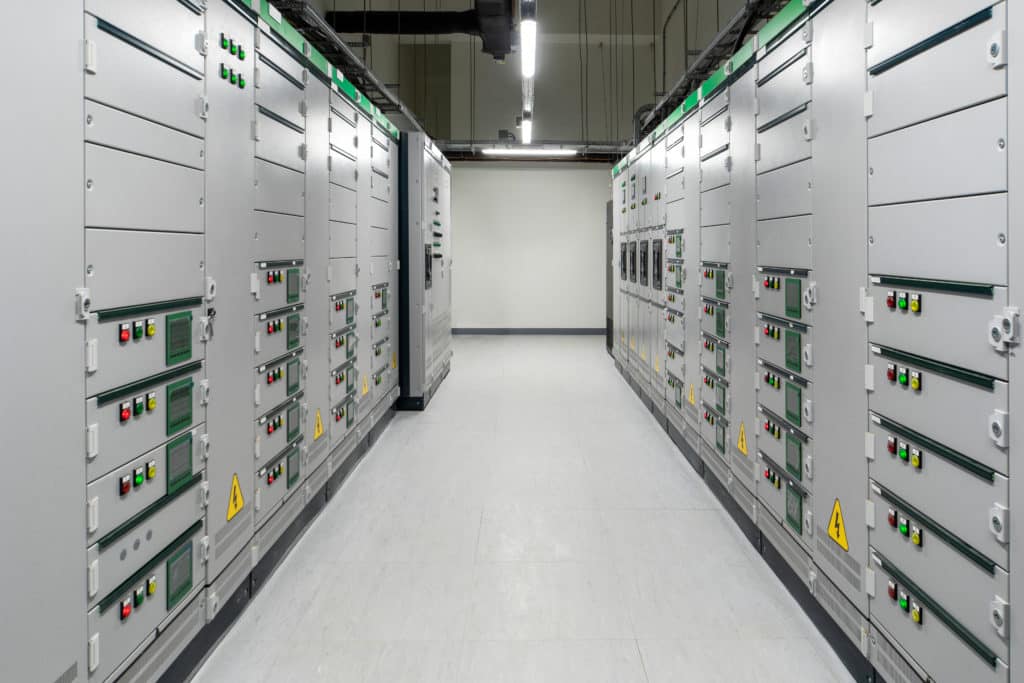
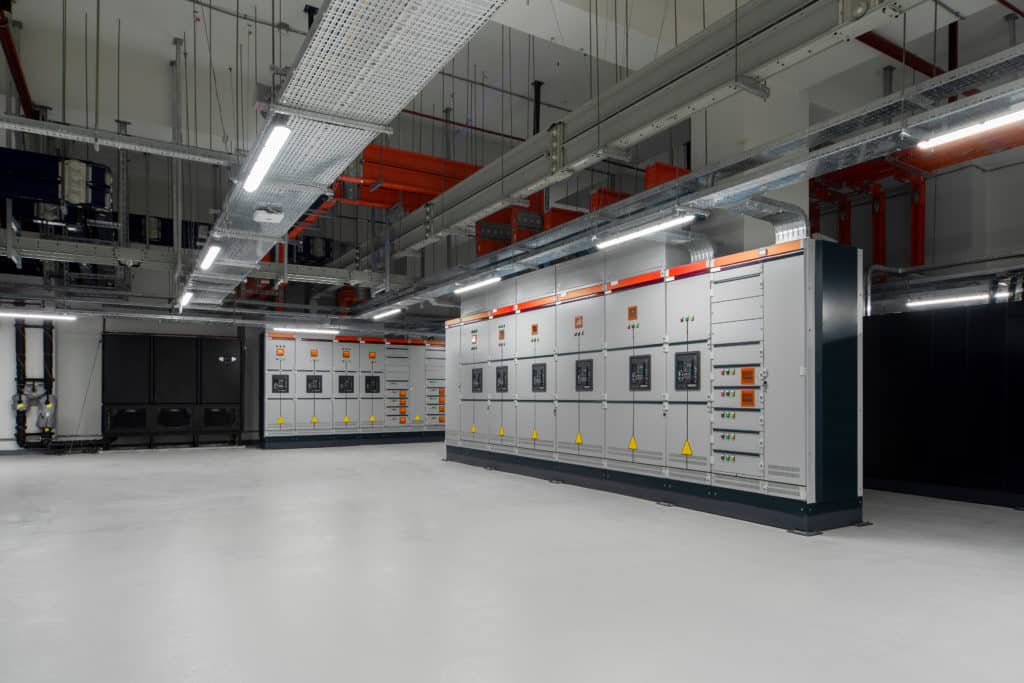
This specialised type of switchboard serves a very similar purpose to a general purpose switchboard, with the added capability of having a draw-out function for one or more feeder breakers. These are often used in medical facilities like hospitals or other emergency services-type facilities where downtime must be reduced when a replacement breaker is needed.
Opting for this switchboard will allow significant space-saving, and it is a far easier type of switchboard to maintain than others.
As with everything else, recent years have brought technological advances to switchboard capabilities worldwide. Newer models like the Pow-R-Line XD switchboard incorporate better draw-out capabilities, including moulded case circuit breakers and power breakers usually found in lower voltage assemblies.
Newer switchboards offer higher density and are more economical in terms of carbon footprint and energy while simultaneously handling higher current rates.
You can reduce downtime with an improved breaker change-out capability, benefit from enhanced safety and achieve the same level of success with your switchboard while using fewer components with this simplified design.
An excellent option for your switchboard is that you can integrate other components with your system to expand your setup. From your basic circuit distribution and protection functions, you can add other pieces of equipment to form an integrated system.
You could even add equipment such as datacom equipment, distribution transformers and uninterruptable power supplies to take your switchboard to the next level and have all your facilities in one place.
Opting for an IFS could save you time and money when it comes to kit out your facility, and are the popular choice for multi-site applications such as restaurants, cafes and shops.
Generator quick connect switchboards are specialised switchboards that are specifically created to let you connect a mobile generator to a building’s electrical system quickly and safely. These pre-set switchboards can be an excellent option for getting your operation up and running quickly in case of an unexpected outage, and are designed to be easily accessible and to safely avoid any hazards that might come up by setting up an entirely new switchboard.
Is your switchboard outdated, tired and in need of an upgrade? Whether you need to use energy more efficiently, you’re experiencing frequent outages or a slowing down of your system, the team at Pro Point Electrical are masters at what they do – and we can upgrade your switchboard in no time.
Call us on 0401 757 325 or email us at nick@propointelectrical.com.au, and we’ll respond as soon as possible.

